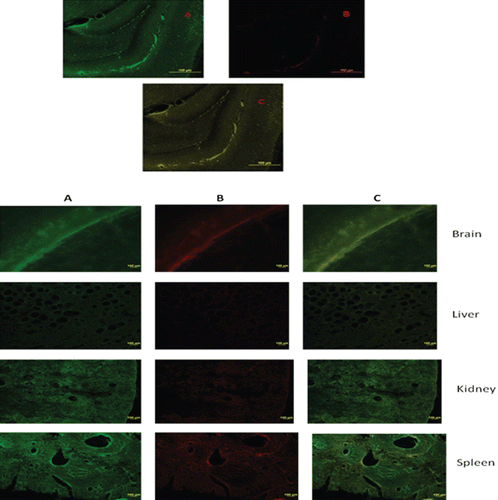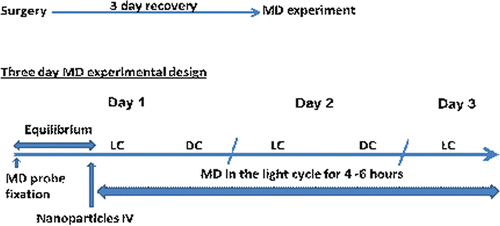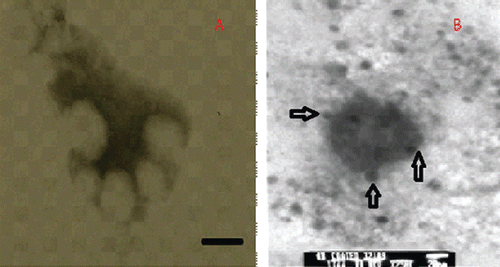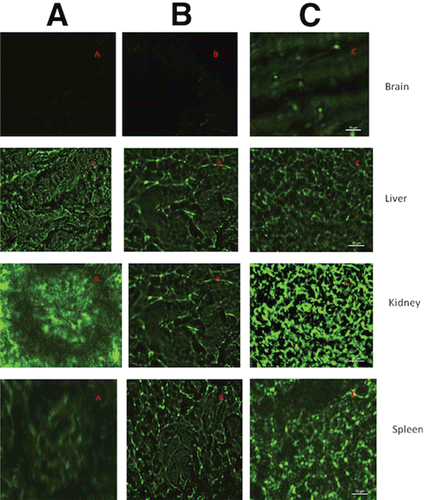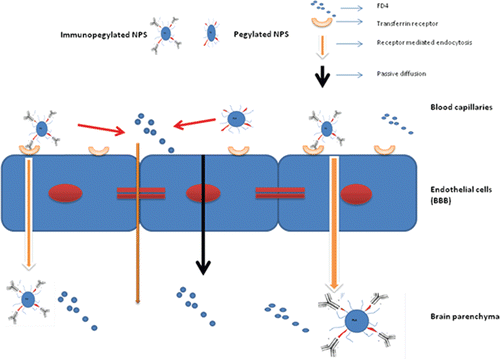Figures & data
Figure 4. Distribution of FD4 in various organs after exposure to (A) FD4 saline solution, (B) Peglyated nanoparticles containing FD4, (C) Antibody-coated pegylated nanoparticles containing FD4.
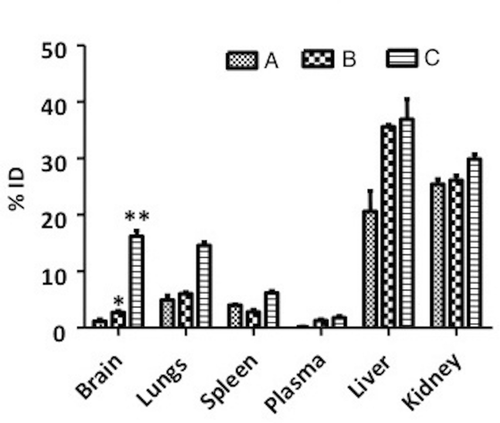
Figure 5. Three-day in vivo brain microdialysis results: concentration of FD4 (corrected for probe recovery) in VHIP of animals receiving antibody-coated pegylated nanoparticles containing FD4. VHIP, ventral hippocampus.
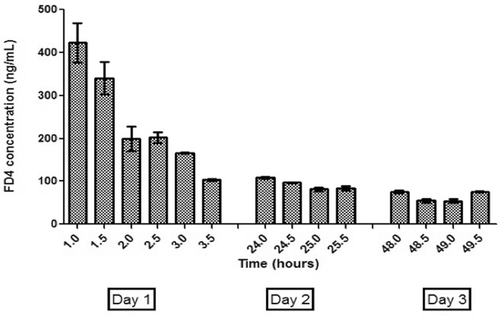
Figure 6. Immunofluorescence confocal imaging of animal tissue after exposure to (A) FD4 saline solution, (B) Peglyated nanoparticles containing FD4, (C) Antibody-coated pegylated nanoparticles containing FD4. Green: FD4, Red: Secondary antibody associated with TRITC.
